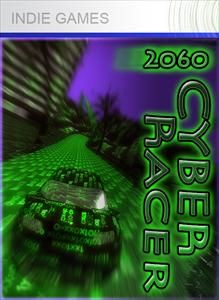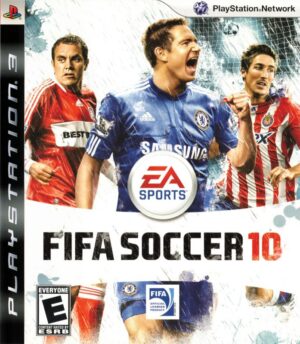Retro Replay Review
Gameplay
Eat Lead: The Return of Matt Hazard delivers a third‐person shooter experience that leans heavily on a cover system reminiscent of Gears of War. Players will find themselves ducking behind crates, barrels, and walls as they pick off waves of enemies with a selection of weapons ranging from classic pistols to over‐the‐top experimental firearms. The controls are responsive enough to make the cover transitions feel natural, though occasional clipping issues can interrupt the flow.
(HEY YOU!! We hope you enjoy! We try not to run ads. So basically, this is a very expensive hobby running this site. Please consider joining us for updates, forums, and more. Network w/ us to make some cash or friends while retro gaming, and you can win some free retro games for posting. Okay, carry on 👍)
What truly sets the gameplay apart is its comedic timing and self‐aware design. Each level is packed with tongue‐in‐cheek references to gaming clichés—exploding barrels seem to pop up more as punchlines than as tactical elements, and boss encounters parody familiar villains from 80s action flicks. Power‐ups are scattered throughout, but instead of standard health boosts, you might find contrived items like “Cliché Bombs” that literally explode in a shower of retro game tropes.
Varied enemy types keep things interesting, from generic grunts to robotic drones that drop witty one‐liners upon their defeat. The AI can be predictable at times, often funneling players into scripted ambushes, but this also plays into the spoof nature of the game. For those looking to replay levels, hidden challenge rooms encourage exploration by offering bonus segments that poke fun at difficulty spikes in classic shooters.
Cooperative play is a mixed bag: while two‐player split‐screen adds to the chaotic fun, online matchmaking can suffer from lag and empty lobbies. Despite these hiccups, the blend of reliable shooter mechanics with a healthy dose of parody makes the gameplay loop surprisingly addictive. As Matt Hazard quips his way through each scenario, you’ll keep coming back for more satirical shootouts.
Graphics
Visually, Eat Lead feels like a pastiche of 80s and 90s graphics, intentionally blending nostalgic textures with modern lighting effects. Character models are detailed enough to showcase Matt Hazard’s exaggerated expressions, especially when he breaks the fourth wall. At the same time, environments often slide into cartoonish exaggeration—giant palm trees, neon signs, and pixel‐styled billboards remind you that this is all part of the joke.
The color palette leans bright and bold, reinforcing the parody vibe. Levels transition from urban cityscapes littered with graffiti to retro video game arenas dripping in pixel art flourishes. Particle effects pop during explosions, and bullet tracers leave streaks of light across the screen. However, on consoles of its era, texture pop‐ins and occasional frame drops can undermine the intended visual punch.
Despite these technical shortcomings, the art direction remains consistently amusing. Enemies wear absurd costumes, such as stereotypical ninja outfits with 80s headbands, and giant robots strike flamboyant poses mid‐battle. These playful design choices make the graphics feel like an affectionate roast of classic gaming visual tropes rather than a harsh critique.
Cutscenes leverage cel‐shaded segments interspersed with live‐action video cameos—most notably Will Arnett and Neil Patrick Harris voicing their parts with infectious enthusiasm. The shift between gameplay and cinematic sequences is smooth, and the stylized transitions keep the overall presentation lively. If you’re seeking photorealism, you may be disappointed, but for a satirical romp, the visuals hit their mark.
Story
At its core, Eat Lead narrates the comeback of Matt Hazard, a long‐forgotten video game star aiming to reclaim his fame. The tale unfolds inside the game’s own code, with Hazard literally navigating a world built by his creator. This meta premise allows for endless jokes about game design, repetitive mission objectives, and the tortured relationship between a hero and his developer.
Voice performances by Will Arnett and Neil Patrick Harris elevate the story with charismatic delivery and sharp timing. Arnett’s gravelly tone as Hazard contrasts perfectly with Harris’s more theatrical approach as the nefarious creator. Together, they bicker, banter, and break the fourth wall so often you’ll feel like you’re part of the punchline.
Plot pacing veers between frantic shootouts and witty banter interludes. Some sequences feel padded—fetch quests and escort missions pop up under the guise of “vintage gameplay callbacks.” Yet, these moments are intentionally lampooned, making even the padding entertaining. By the time you reach the climactic showdown, you’ll appreciate how the narrative cleverly mirrors classic 80s action beats while constantly skewering them.
Underlying the humor is a genuine affection for old‐school shooters. The story doesn’t just mock its predecessors; it celebrates them. As Hazard and his allies traverse levels filled with VHS tape easter eggs and pixelated echoes of past franchises, you sense a loving parody, not a spiteful send‐up. This balance gives the game’s narrative a surprisingly warm edge amidst the comedic chaos.
Overall Experience
Eat Lead: The Return of Matt Hazard stands out as a unique entry in the shooter genre, prioritizing laughs as much as bullets. Its self‐aware humor and meta commentary provide a fresh twist on otherwise familiar gameplay mechanics. Fans of Gears‐style covers shooters will find a comfortable foundation, while its comedic overlay ensures the experience never feels stale.
Technical hiccups—such as frame rate dips, occasional glitches, and empty online lobbies—can detract from the experience but rarely derail it entirely. The game’s narrative charm and engaging voice acting carry you through any rough patches. By poking fun at video game conventions, Eat Lead creates its own identity, planting itself firmly in the nostalgia‐spoof niche.
Replay value is boosted by unlockable challenge rooms, hidden references, and branching dialogue that reveals new jokes on subsequent playthroughs. Achievements tied to completing parodied objectives—like exploding a certain number of barrels—give completionists even more reasons to dive back in. The game’s humor hits harder when you’re hunting down every last easter egg.
For potential buyers seeking a shooter with personality, Eat Lead delivers. It may not redefine the genre or boast cutting‐edge graphics, but its satirical writing, charismatic voice cast, and playful design make it a memorable, entertaining ride. If you appreciate meta‐gaming humor and a lighthearted take on 80s action lore, Matt Hazard’s return is well worth your time.
 Retro Replay Retro Replay gaming reviews, news, emulation, geek stuff and more!
Retro Replay Retro Replay gaming reviews, news, emulation, geek stuff and more!




Reviews
There are no reviews yet.